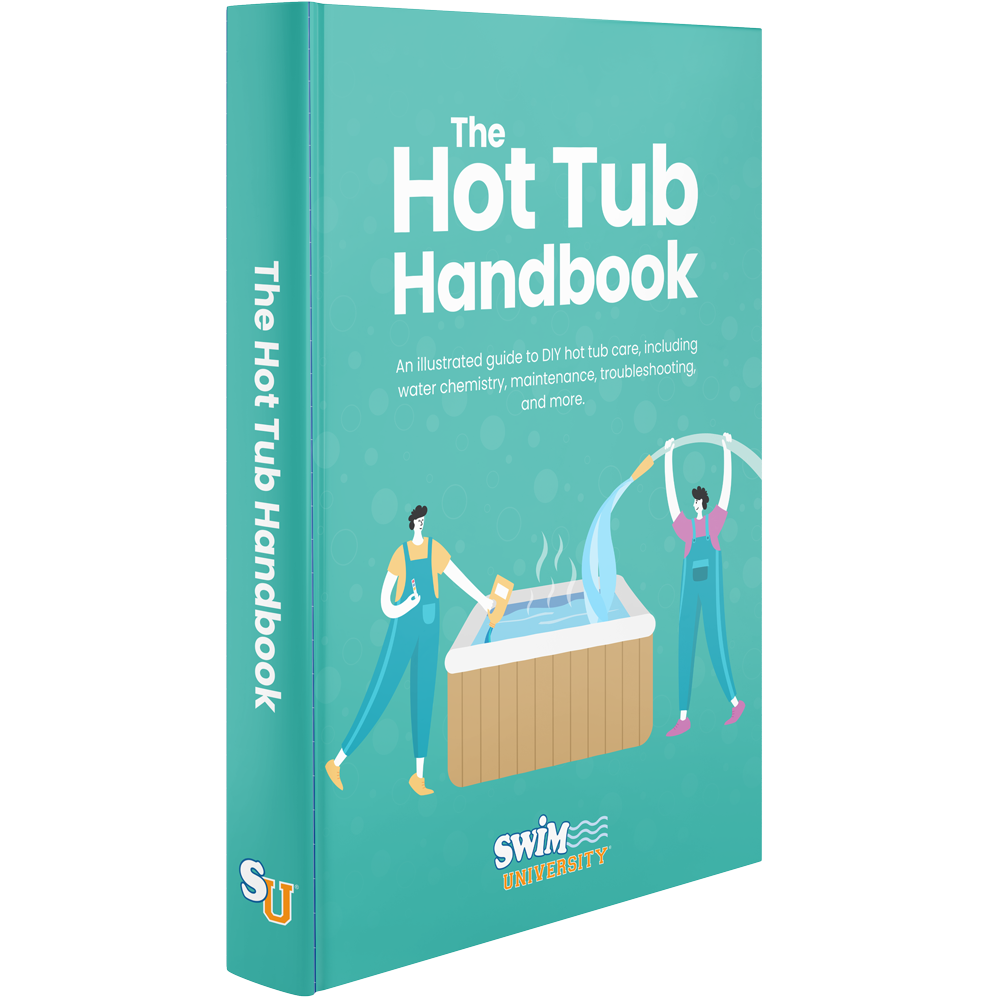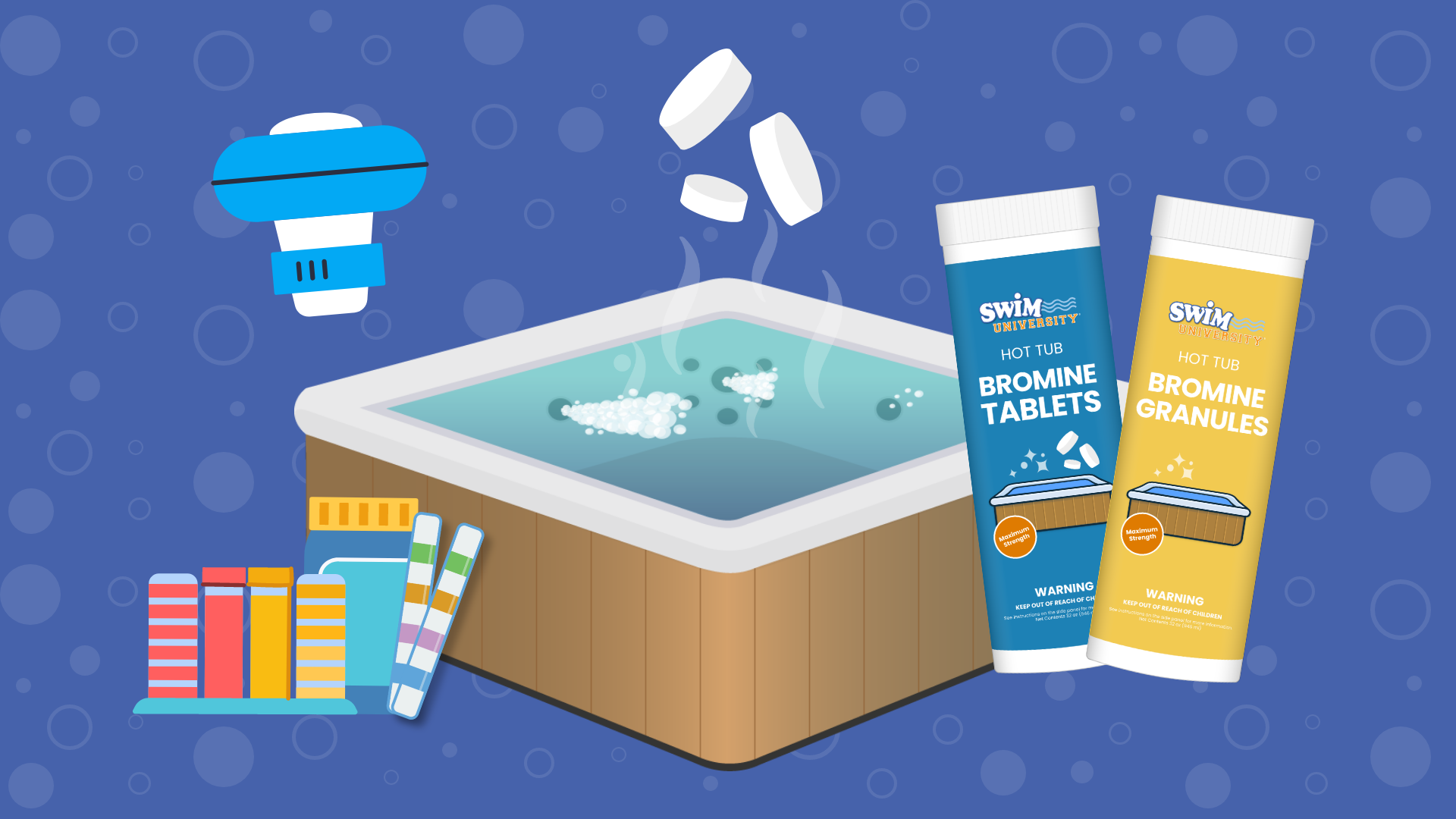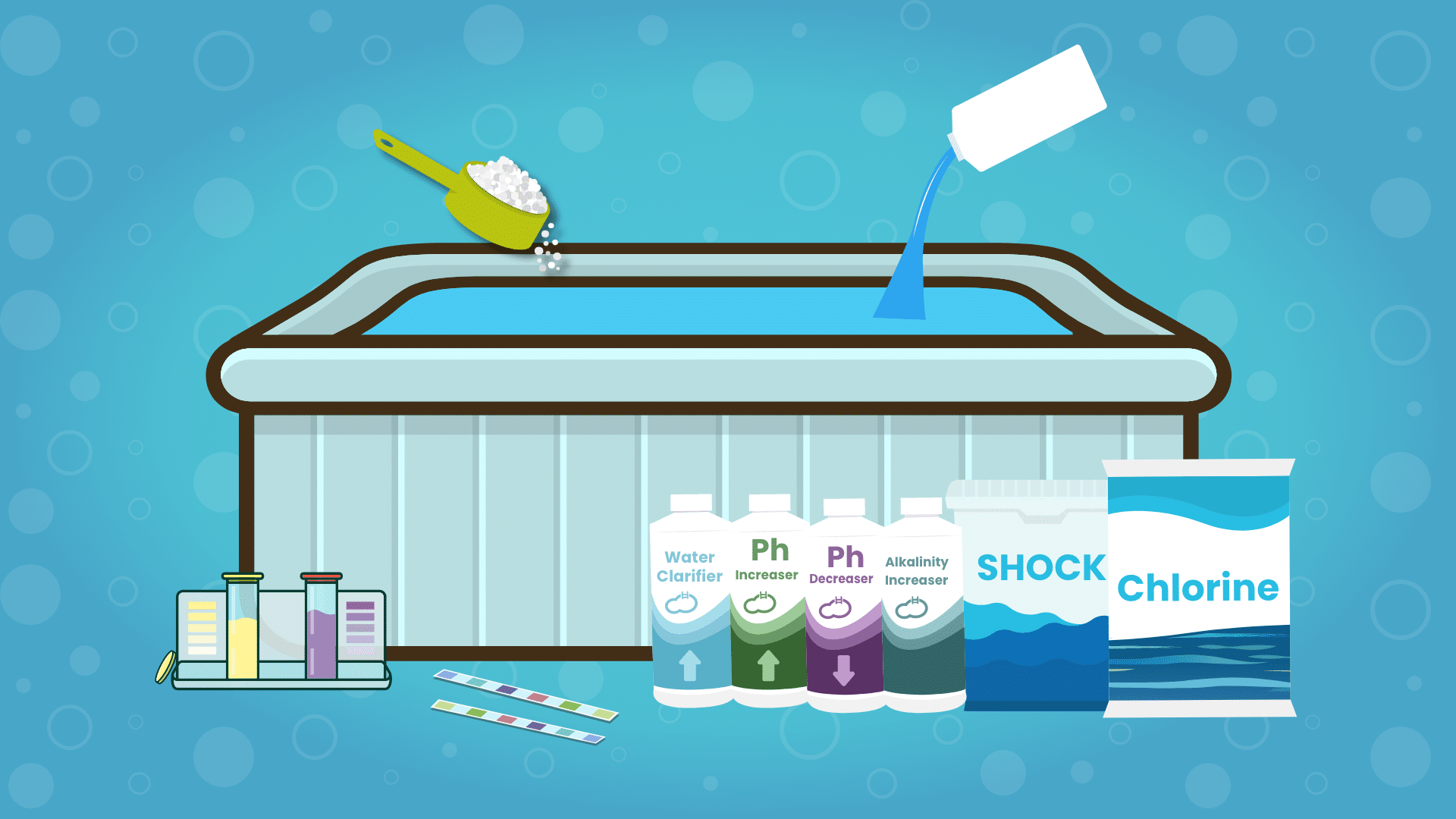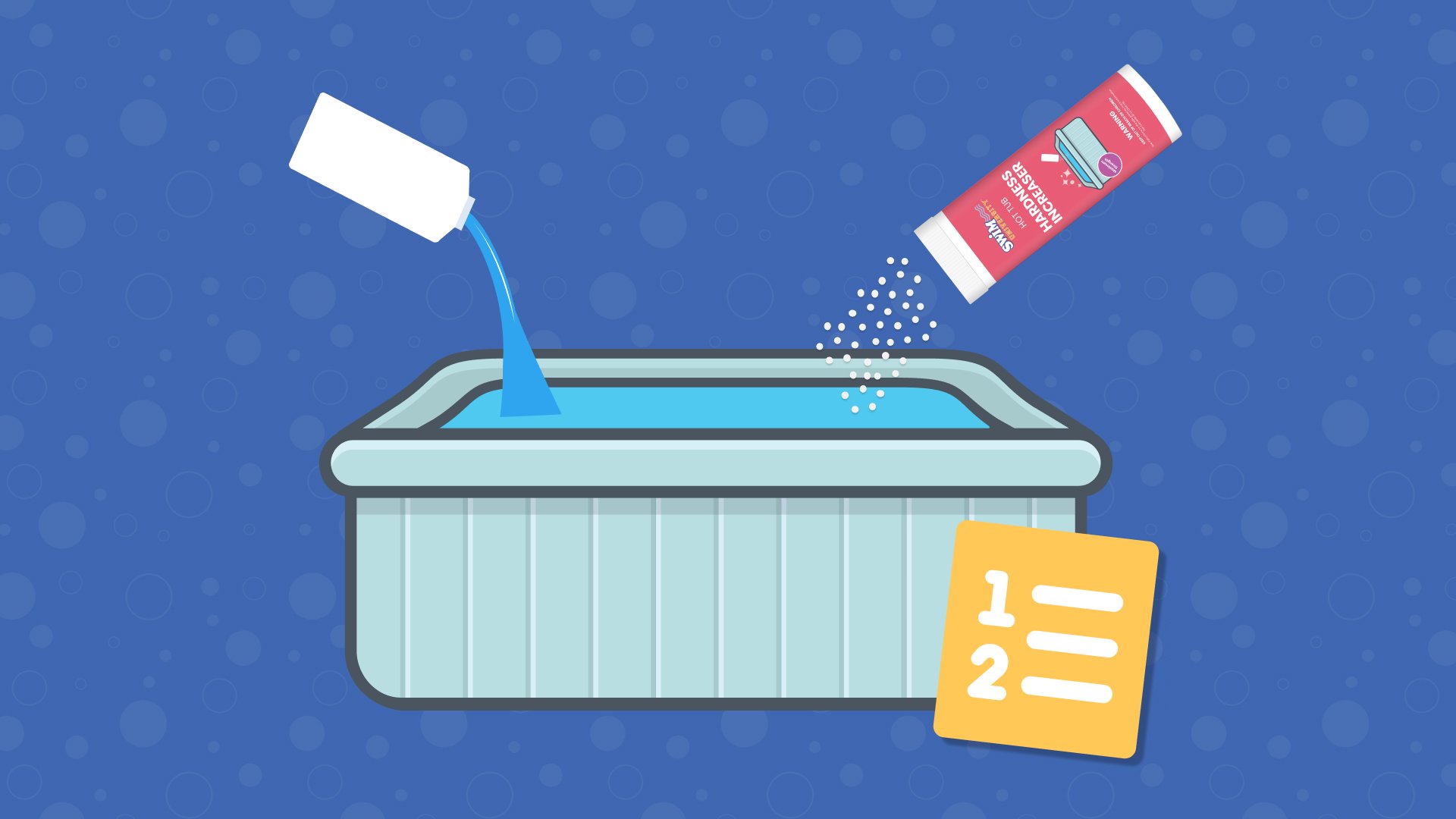How to Lower Chlorine in a Hot Tub Fast
Too much chlorine in your hot tub water can corrode your hot tub surfaces and irritate your skin. Luckily, lowering chlorine in your hot tub is extremely easy. In fact, you might not have to do anything at all.
Here’s a quick guide on how to lower chlorine in a hot tub. Watch the video below or keep reading for the complete tutorial.
Learn how to keep your hot tub clear while saving money so you can enjoy more soaking time without big costs. The Hot Tub Handbook covers every type of hot tub on earth.
How to Tell if There’s Too Much Chlorine In Your Hot Tub
If you’ve noticed a strong, chlorine-like smell coming from your hot tub water, or your eyes burn after taking a soak, it’s likely not because of too much chlorine. These are common signs of “used up” chlorine, a.k.a. chloramines, in the water. When chlorine combines with contaminants, it creates chloramines, which cause that chlorine-like smell. So a chlorine smell means your hot tub needs more chlorine, not less. And eye and skin irritation is likely from imbalanced pH levels.
The most accurate way to know if you have too much chlorine in your hot tub is to test your free chlorine levels. Your free chlorine measures the active chlorine that’s available to sanitize your water. When it’s used up to kill contaminants, that’s called combined chlorine. Adding free and combined chlorine together gives you your total chlorine.
If your total chlorine is high but your free chlorine is low, it means you have lots of combined or used-up chlorine in your hot tub. Again, that’s what causes the chlorine smell. You can add a non-chlorine shock to remove chloramines and help revitalize your sanitizer. Regardless, test your levels to verify that you need to lower your chlorine before proceeding to the next steps.
What’s the Right Chlorine Level for a Hot Tub?
Your hot tub chlorine levels should be between 1 and 3 parts per million (PPM), with 3 PPM being ideal. If you use a mineral floater or dispenser, you only need 0.5 PPM of chlorine. But keeping your chlorine is only one element to balancing your water chemistry. Here are the right chemical levels for a hot tub.
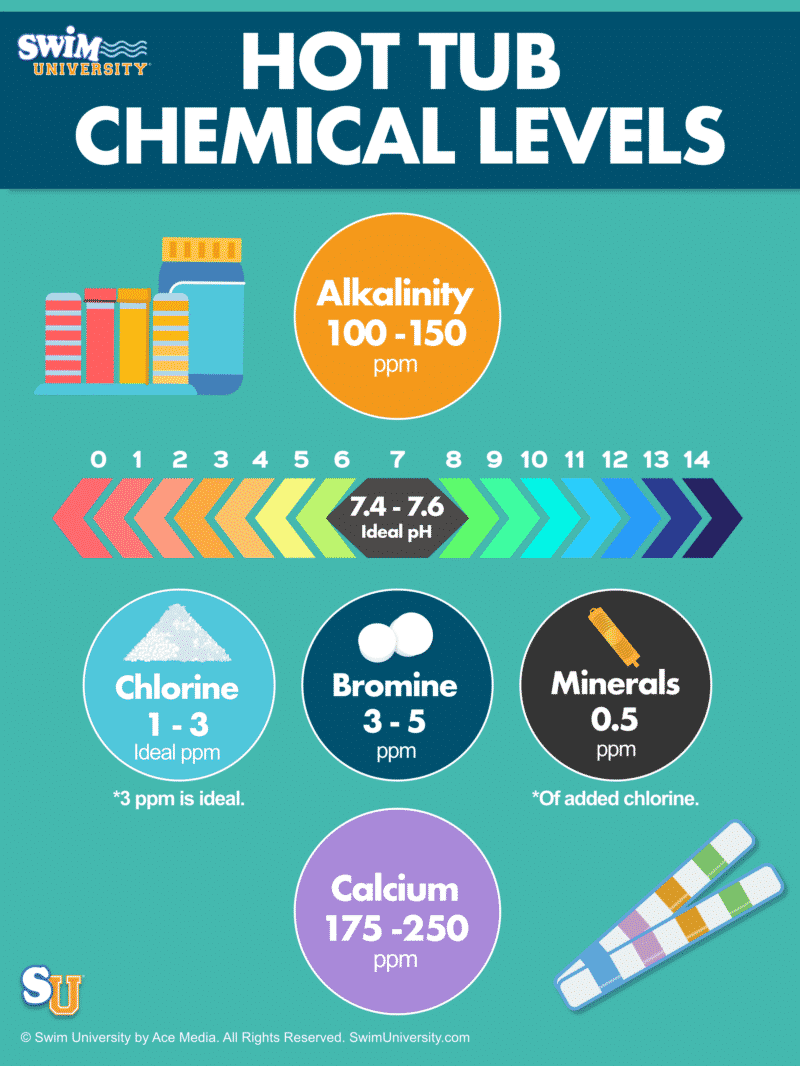
How to Lower Chlorine in Your Hot Tub
Once you’ve tested your water to confirm your free chlorine is too high, it’s a simple process to bring your chlorine levels down. All you need is time and fresh water.
1. Stop Adding New Chlorine
The first step is eliminating the source of the problem. Stop adding new doses of chlorine to your hot tub. If you have an automatic chlorinator or chlorine floater, turn it off or remove it from your hot tub.
2. Run Your Hot Tub with the Cover Off
Once you’ve stopped adding new chlorine, your chlorine levels will naturally decrease over a day or two. But you can speed up the process by encouraging evaporation.
Turn on your jets and remove your hot tub cover to help the chlorine evaporate. Exposing your chlorine to direct sunlight will also help speed up the process. Just be sure to stay out of the hot tub during this time.
Your water level will drop during this process. Be sure it doesn’t drop below the skimmer port while your hot tub is running.
3. Dilute Your Water
After your water level has dropped a couple of inches, refill your hot tub with fresh, filtered water. Let it circulate, then test your water again. Your chlorine levels should be lower after adding new water, but your other levels (like pH) will drop as well so be sure to test and rebalance everything. Repeat the process as needed or manually remove some water with a hose siphon or sump pump.
If you need help draining your hot tub water, be sure to check out our other guide on How to Drain a Hot Tub.
How to Lower Chlorine with a Chlorine Neutralizer
If you don’t want to wait to reduce your chlorine levels naturally, you can use a chemical called chlorine neutralizer. It helps reduce the free chlorine in your water. But we recommend using a neutralizer only if you’re in a pinch. This chemical will continue to destroy chlorine until the neutralizer is completely used up. It’s easy to use too much, which leaves your hot tub without enough working sanitizer.
This chemical removes chlorine and bromine from swimming pool water.
How to Keep Chlorine Levels in Range
Following a simple, weekly hot tub care routine is an easy way to keep your chlorine levels in check.
- Test and balance your water weekly: Test your alkalinity, pH, and sanitizer, and adjust your chemicals as needed.
- Dose your chlorine correctly: Make sure any chlorine dispensers, like floaters or chlorinators, are set to add the proper amount of chlorine relative to your hot tub’s size.
- Run and clean your filter regularly. This will keep your chlorine circulating in the water. Here’s a quick guide on how to clean hot tub filters.
- Use a non-chlorine shock weekly or after each soak. Non-chlorine shock (a.k.a. oxidizer) will help break up chloramines and remove that chlorine-like smell.
Also known as oxidizer, non-chlorine hot tub shock helps revitalize your chlorine or bromine so it can actively sanitize your water. Use an oxidizer at least once a week but ideally after each hot tub soak to keep your water sanitized.
3 More Ways We Can Help With Your Hot Tub
- Hot Tub Cheat Sheets (Free): Easy-to-use guides to help you keep your hot tub water balanced and sanitized.
- The Hot Tub Handbook: An illustrated guide to DIY hot tub care, including water chemistry, maintenance, troubleshooting, and more.
- The Hot Tub Care Course. You’ll get step-by-step videos and a step-by-step downloadable guide with everything you need to know about hot tub maintenance.

